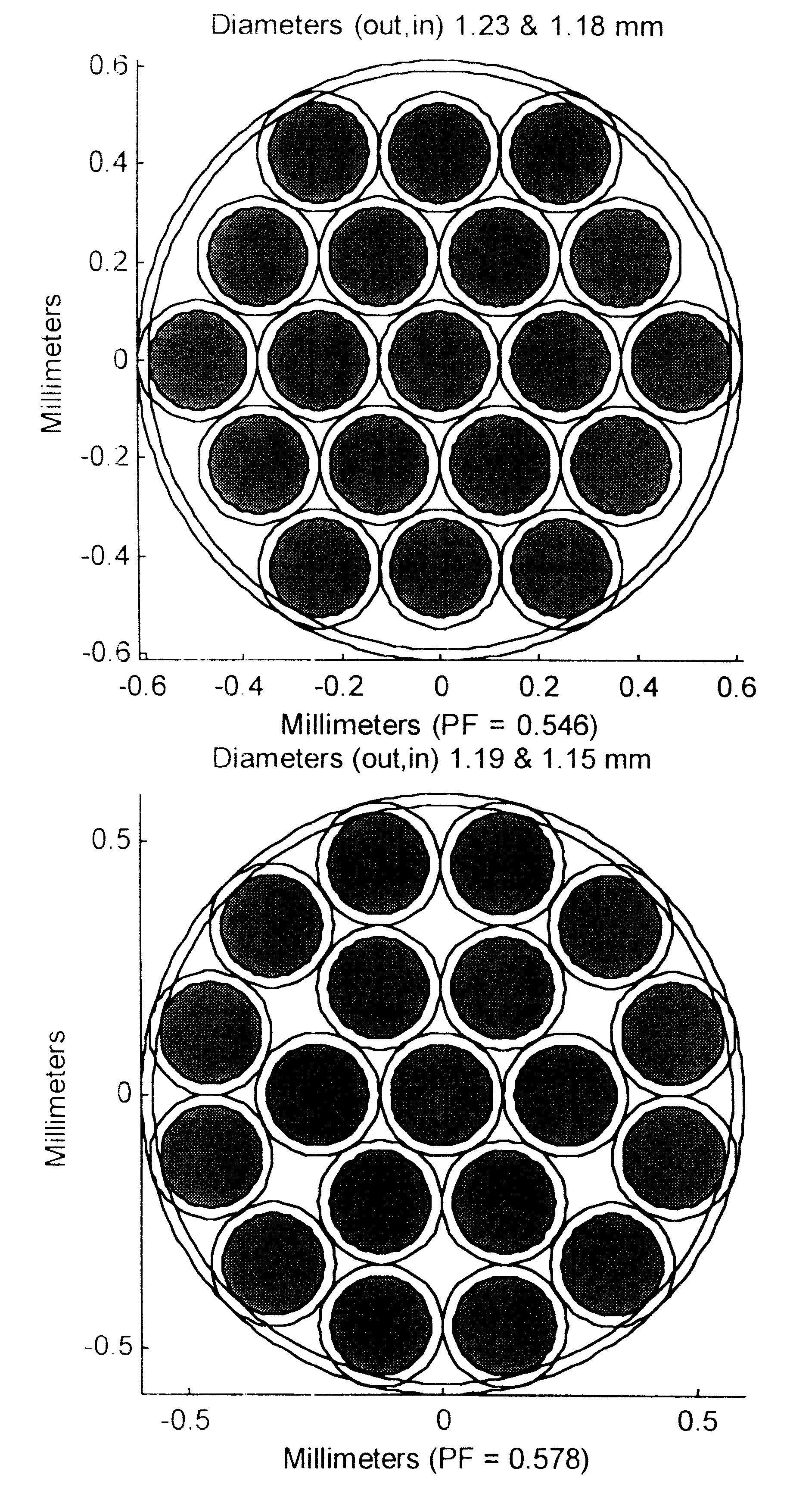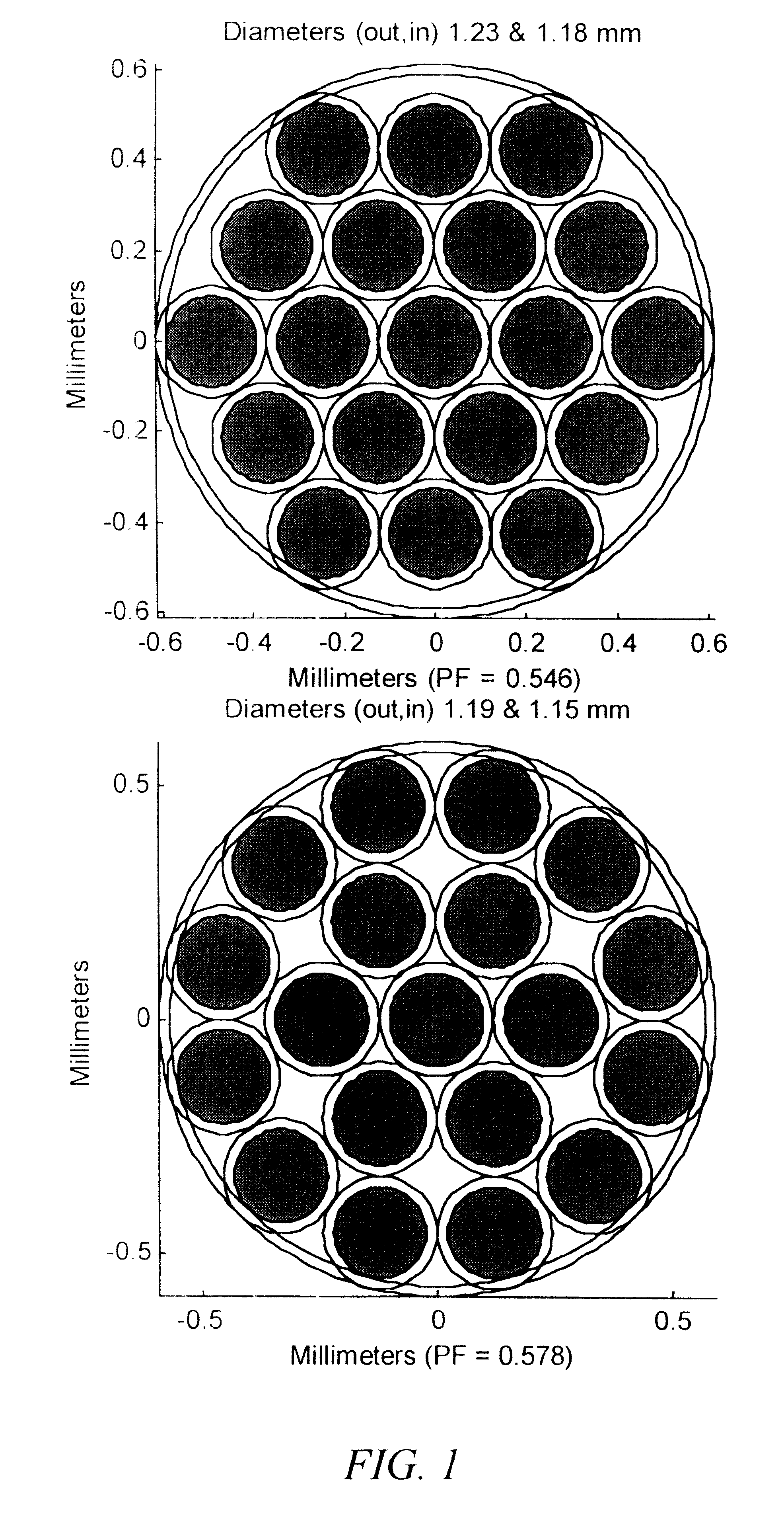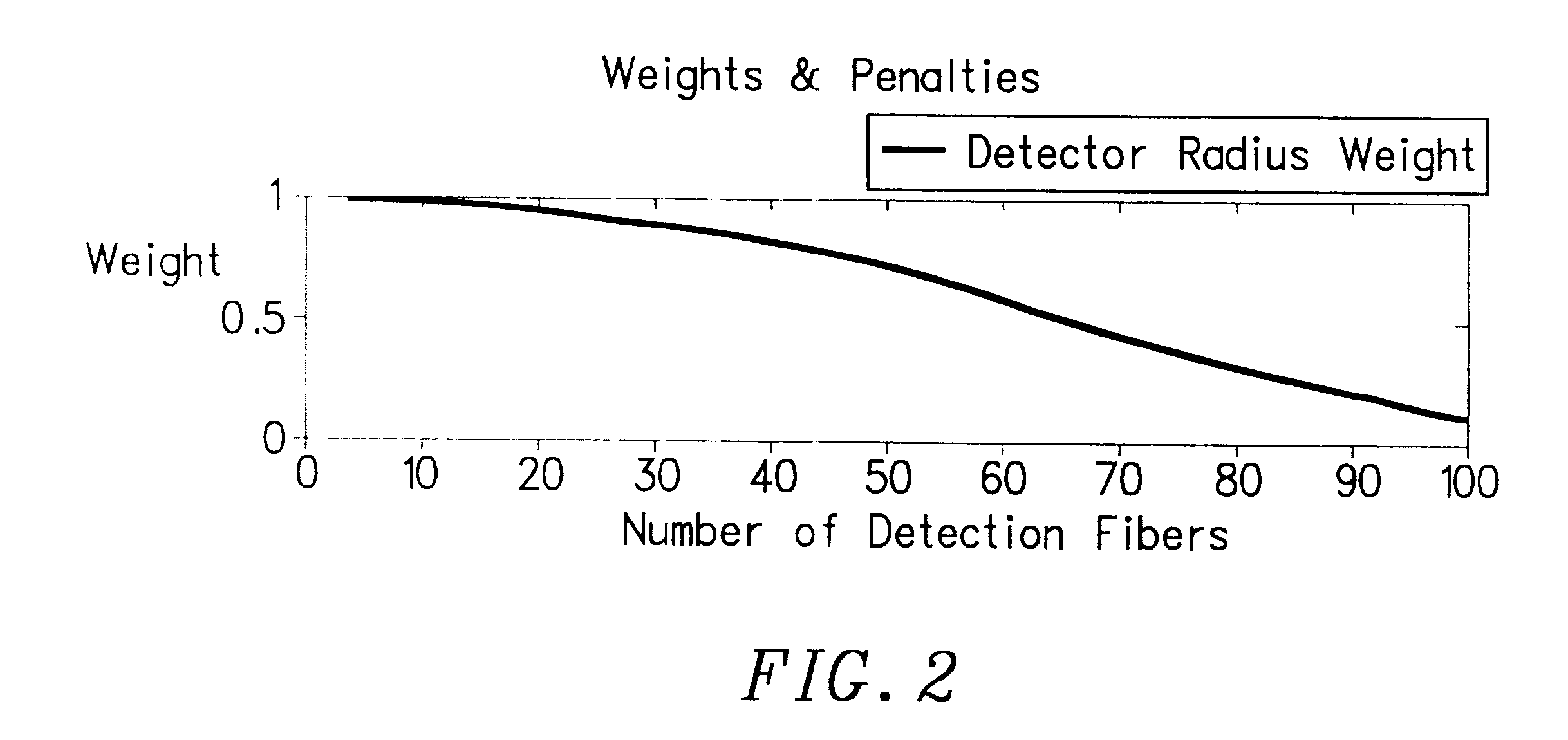Fiber optic illumination and detection patterns, shapes, and locations for use in spectroscopic analysis
a fiber optic and detection pattern technology, applied in the direction of instruments, optical elements, bundled fibre light guides, etc., can solve the problem that the device has provided less than satisfactory results
- Summary
- Abstract
- Description
- Claims
- Application Information
AI Technical Summary
Benefits of technology
Problems solved by technology
Method used
Image
Examples
Embodiment Construction
Optimization
Generally, it is desirable to design for the best or optimal solution, indicating the lack of ability to improve upon a design. In the presence of design constraints, however, the term optimal solution is often employed meaning the best solution, given the tradeoffs and practical considerations. The term optimization, as used herein, means the maximization of a cost or evaluation function in some manner based upon a pre-defined set of mathematical operations. With regard to the preferred embodiment of the invention described herein, the evaluation function is an estimate of the modeled signal-to-noise ratio. The optimization criterion maximizes the sum of this evaluation function in a portion of the combination band (2100-2250 nm) that is deemed to be representative of the glucose molecule's absorption in that region.
Weights & Penalties
Detector Penalty
As discussed above, light from the detector fibers is focused onto the detector using a two lens system. The detector fib...
PUM
 Login to View More
Login to View More Abstract
Description
Claims
Application Information
 Login to View More
Login to View More - R&D
- Intellectual Property
- Life Sciences
- Materials
- Tech Scout
- Unparalleled Data Quality
- Higher Quality Content
- 60% Fewer Hallucinations
Browse by: Latest US Patents, China's latest patents, Technical Efficacy Thesaurus, Application Domain, Technology Topic, Popular Technical Reports.
© 2025 PatSnap. All rights reserved.Legal|Privacy policy|Modern Slavery Act Transparency Statement|Sitemap|About US| Contact US: help@patsnap.com



